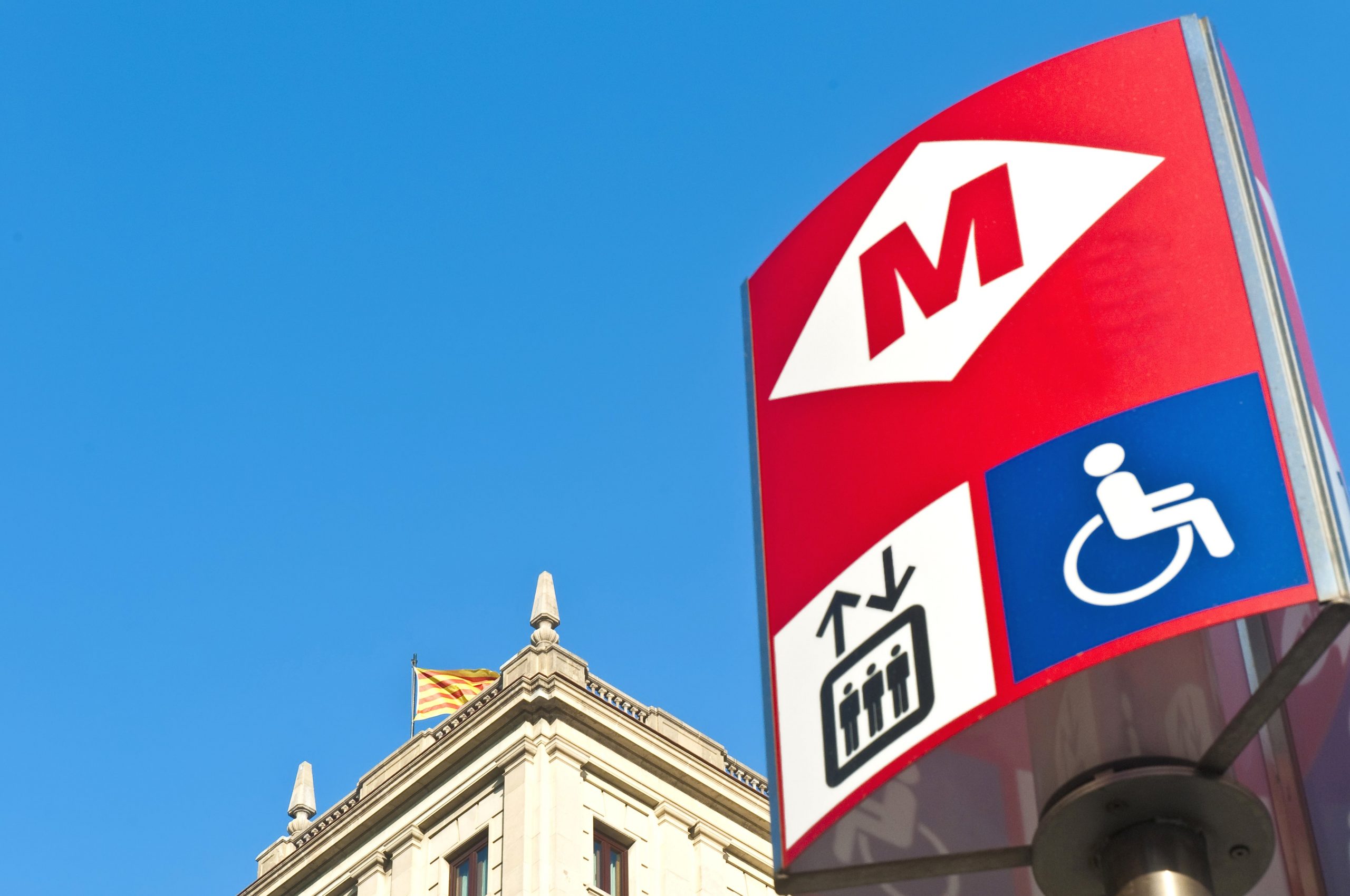-
Metro
The quickest way to get around Barcelona is by metro or FGC; the trains are punctual and will take you to all of the main attractions. The air-conditioned trains are especially useful in the summer, when Barcelona is hot! There are eight metro lines identified by the number and colour of the line. For Metro stations look for a sign with a red M.
The Metro (TMB) operates from 5am until midnight Sunday to Thursday and public holidays. Friday and Saturday from 5am-2am.
There are 8 lines: L1, L2, L3, L4, L5, L9, L10, L11 managed by the company TMB (Transports Metropolitans de Barcelona).
FGC suburban Rail Service
The FGC (Ferrocarrils de la Generalitat de Catalunya) is a suburban rail service which supplements the metro.
The FGC operates from 5am until midnight Sunday to Thursday and public holidays. Friday and Saturday from 5am-2am.
There are 4 lines L6, L7, L8 and L12.

-
Bus
Buses are less frequent than the metro running every 20 to 30 minutes. Schedules vary according to the bus route. Most services begin between 5 and 8am and end between 10 and 11pm. You can check bus times and frequency at the bus stops and on the website: www.tmb.cat
There is also a night-bus service (Nit Bus) which serves most of the city and its suburban area. Most services begin between 10.40pm and 11.40pm and end between 5am and 6am. www.ambmobilitat.cat
-
Funicular (for Montjuic)
The Barcelona funicular railway connects the city with Montjuïc Park from Paral·lel (lines L2 and L3) metro station. It only takes two-minutes so it is the quickest and most convenient way to get to Montjuïc.
The Funicular operates from 7.30am to 10pm Monday to Friday and 9am to 10pm on Saturday, Sunday and public holidays. Times are slightly reduced during the winter months.
For further information about Barcelona's metro, funicular and rail services:
www.fgc.cat
-
Tram
The Tram provides easy access to Barcelona's major shopping areas and residential zones, and the small towns in the metropolitan area. Although you are unlikely to use the tram if you are staying in the centre. There are 2 Tram lines in Barcelona: The Trambaix (T1, T2, T3) and the Trambesòs (T4, T5, T6),
Trams operate from 5 am to Midnight Sunday to Thursday and public holidays and 5 am to 2 am Friday and Saturday.
-
Tickets
Tickets
Transport in Barcelona is simple as you use the same ticket for all transport types. There are different tickets, you can buy a single ticket, a ticket of ten journeys or a tourist travel card. Be careful because tickets may not be valid for the airport.
You can buy single tickets for €2.40 which are valid for 75 minutes (an hour and a quarter), during which time you can make as many line changes as you like without leaving the metro.
If you intend to stay in the city for a few days there are cheaper options:The T-Casual ticket is great for tourists, it allows 10 journeys on public transport for €11.35. The ticket is only valid in Zone 1 – which is where the major museums and attractions are. Tickets are valid on the metro, FGC, buses, tram and RENFE to Barcelona Airport.
You can buy a T-Casual from any metro stop and from the Airport at the entrance to the RENFE train.

-
T-Casual Transport Ticket – Zone 1
The T-Casual ticket is great for tourists, it allows 10 journeys on public transport for €11.35. The ticket is only valid in Zone 1 – which is where the major museums and attractions are. Tickets are valid on the metro, FGC, buses, tram and RENFE to Barcelona Airport.
You can buy a T-Casual from any metro stop and from the Airport at the entrance to the RENFE train.
-
Hola
The Hola Barcelona Travel Card allows unlimited journeys for 48, 72, 96 or 120hours on the metro, bus (TMB), urban railway (FGC, Zone 1), Montjuïc funicular, tram (TRAM), and regional railway (Rodalies de Catalunya, Zone 1). Travel to Barcelona-El Prat airport is also included.
https://www.holabarcelona.com/
-
Companion pass
The companion pass is a special ticket for those accompanying travellers with special needs or disability. The pass allows the companion to travel for free. Tickets need to be ordered in advance, for more details see the website:
https://www.tmb.cat/en/barcelona-fares-metro-bus/single-and-integrated/passi-acompanyant
-
Accessibility for Wheelchair users
Alongside sustainable transport, Barcelona takes accessibility for travellers with reduced mobility and sight impairments very seriously. They are at the forefront in Europe, in recent years the city has made every effort to make the city as accessible as possible, installing lifts, ramps, widening entrances and installing disabled access where previously there was none.
Work is ongoing, but at least 90% of the metro stations are now accessible for wheelchair users with elevators, wide entrances and ground floor access or via ramps. The exception is Plaça Espanya,an important transport hub in the city centre and where bus No. 46 coming from the airport stops.
Barcelona’s buses are 100% accessible as they are all fitted with ramps for wheelchair user access and have allocated areas inside the bus with safety rails and seatbelts.
Montjuic Cable Cars are adapted for wheelchair access as are all of the city’s hop-on hop-off tourist buses.
For more details on wheelchair access on public transport, maps of accessible metro stations and more:
https://www.tmb.cat/en/barcelona/accessibility-mobility-reduced

-
Taxis
If you can move to the front passenger seat unaided you can take any taxi. Or,Taxi Amic specialise in passengers with reduced mobility with a fleet of 45 adapted vehicles. You can call them on (+34) 93.420.80.88 or reserve online https://www.taxiamic.cat/en/
-
Mobility in the City for wheelchair users
Much of Barcelona has wide, flat areas and efforts are being taken to lower footpaths if they are not already accessible, even the beach ha. Most museums and attractions are wheelchair accessible as well as larger and more exclusive restaurants. Many smaller bars and cafés have outside space and many have ground floor access, the only difficulty may be wheelchair accessible toilet facilities.